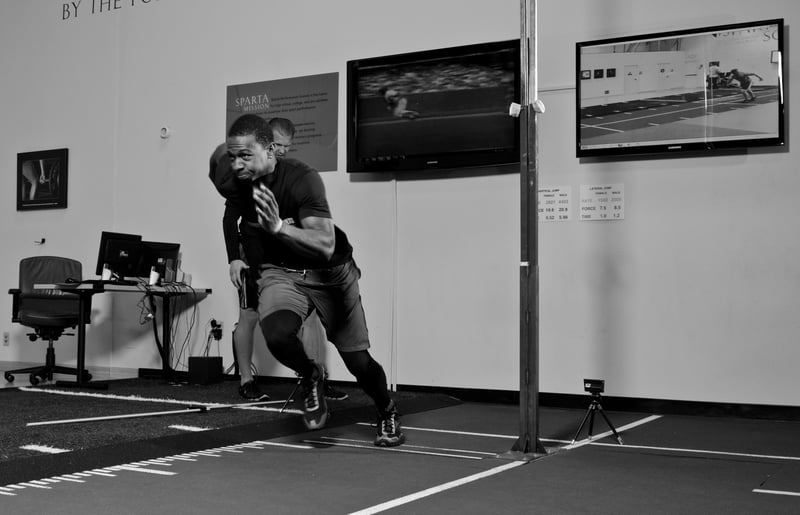
Every athlete understands the need to move fast. At the same time, fast movement without control ends up being sloppy and ineffective. The real goal is to change tempo, accelerate and decelerate, efficiently. This is what we look at with each athlete’s Sparta signature.
The ability to produce force in a simple test like the vertical jump provides great insight into an athlete’s ability to accelerate, decelerate, and transfer forces efficiently in every movement that they do. As a coach, the signature gives you the ability to objectively determine where to focus your efforts on both the physical and psychological components of training.
Great coaches know how important it is to train with intent. One great example is the mindset of moving a weight as fast as possible. This is beneficial because it elicits adaptation from both the nervous system and the muscle. We use the force plate to measure LOAD, or rate of force development. By looking at an athlete’s Sparta Signature and comparing the relationship between LOAD, EXPLODE, and DRIVE, we not only prescribe the most effective movements to address their neuromuscular needs, but we can also gain insight into how to coach them from a psychological standpoint.
Some athletes really do need to focus on faster tempo; moving the weight or contacting the ground as fast as possible. Some need to focus more on their posture, positioning, and body control. Others need to focus on longer, smoother ranges of motion. By providing an athlete with with these mental cues, you can change the intent of each exercise and improve the efficiency of their movement.
We use depth jumps as a tool for training LOAD, rate of force development. This means that our intent is to use fast tempos, maximize stiffness, and limit time on the ground. Moving fast becomes the goal of the movement, but it must still be balanced by body control and rhythm with the arms. By matching the exercise with a goal (as fast as you can) and creating intent (mental cue – stiffness), athletes learn to get the most out of each movement.
Create stiffness in the calves and quads and center your weight in the “sweet spot” of the foot
“Punch” the ground on each contact with the goal of spending as little time on the ground as possible
Maintain a stable trunk position and focus on short arm swings to maintain your rhythm.
Mental cues are a huge part of great coaching. It is often very hard to visually distinguish the subtleties of excellent movement versus average movement. This is why it is so important to coach the psychology and convey the intent of every exercises. Stay tuned for future posts which will link the importance of objective feedback for validating mental cues.